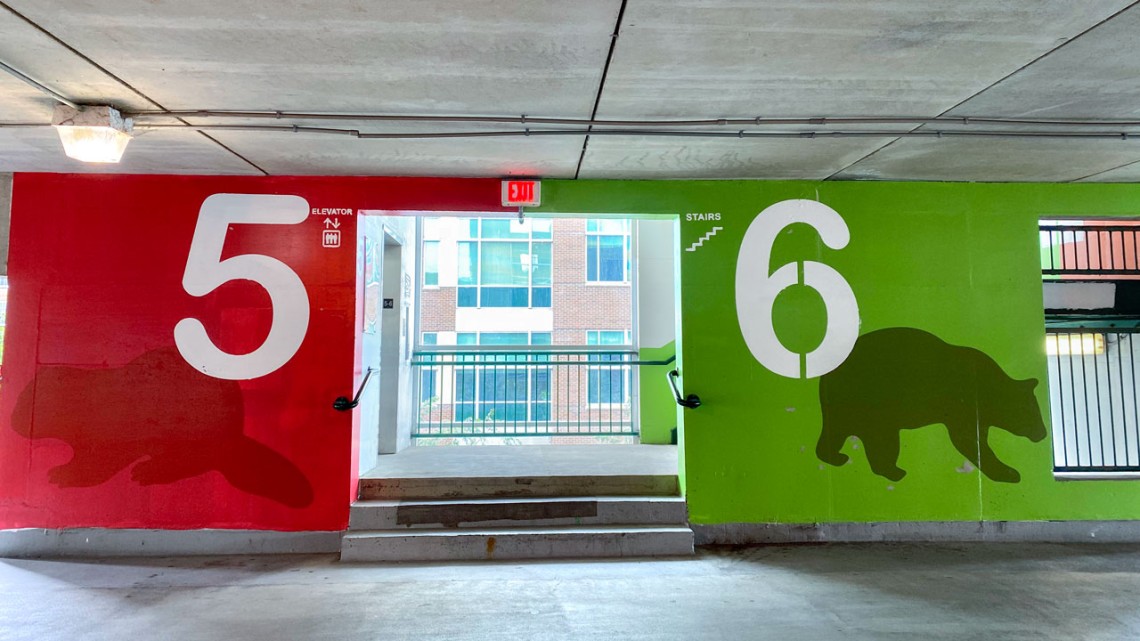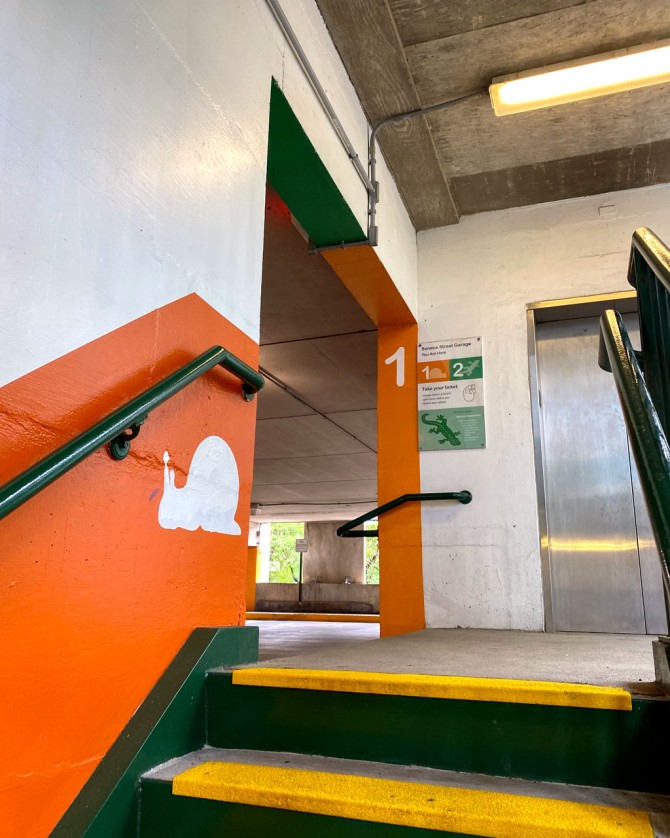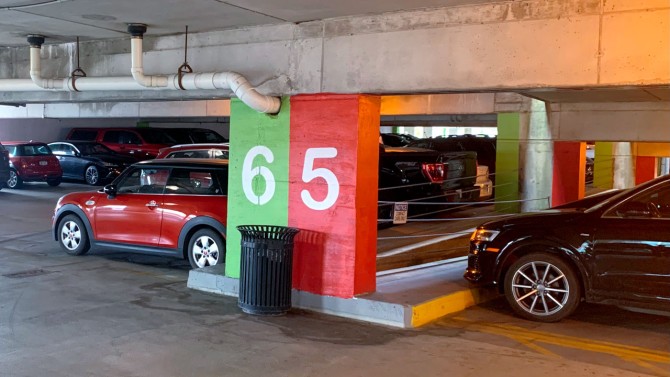
A student team from Cornell University Sustainable Design have completed a five-year project to redesign the signage system in the Seneca Street Parking Garage in Ithaca. Animal imagery and colors are assigned to each floor to help drivers remember where they parked.
Student project adds whimsy to downtown parking
By Holly Hartigan, Cornell Chronicle
A downtown Ithaca parking garage is easier to navigate thanks to Cornell University Sustainable Design’s Sustainable City team.
The interdisciplinary team of students, which operates under the Systems Engineering program, designed a new signage system for the garage that employs colors and animal imagery to help drivers. Along the way, the students applied their design-thinking coursework, worked with city stakeholders and learned real-world lessons about how to take their designs from the drawing board to reality.
Team members kicked off the project in 2019 with empathy fieldwork, where they went into the garage and asked users about their experience, making sure they heard from out-of-town visitors, families, people who work nearby, students and more. They watched users struggle with – and sometimes swear at – the pay stations.
“These are the types of things that can ruin someone’s afternoon with the frustration,” said former team lead Sabrina Martin ’23.
The team created clear instructions for the pay stations and a system of labeling floors with numbers, colors and animal icons to help people remember where they parked.
“We wanted to introduce animals, murals, anything we could do to help people remember what floor they parked on: ‘I parked on the teal floor, it had a squirrel, and that was really memorable,’” said Emily Kerstetter ’24, project co-lead.
Kerstetter and current co-lead May Yuasa ’24, both studying civil engineering in Cornell Engineering, said the group learned a lot about the difference between design and implementation during the five-year project. Initial designs were more elaborate, but they faced delays and budget cuts and COVID-related material cost increases. Additionally, the city is considering replacing the garage, so the new signage system may have a short lifespan.
“You have to be patient, and you just have to keep trying with projects like this,” Yuasa said.
The city’s original $30,000 budget for the project was slashed after COVID. “That’s when the fun really started because I said, ‘Look, let’s try to keep the concept,’” said Sirietta Simoncini, project adviser and lecturer in Cornell Systems Engineering.
The Downtown Ithaca Alliance funded the project with $6,500 raised from donors, which became the team’s new budget. To preserve the functionality of their original design, students swapped more expensive materials out for paint and simple signs; students used the Digital Design and Fabrication Studio in the Human Ecology Building to make stencils; and the city handled the painting and installation.
Team members felt a real connection to this seemingly simple project.
“I remember when I first joined the team I wasn’t necessarily super excited by the idea of a parking garage,” Martin said. “And then it easily became the best thing I did at Cornell and my favorite experience.”
Gary Ferguson, who retired as Downtown Ithaca Alliance’s executive director in June, said he gives Simoncini and her team a lot of credit for seeing this project through.
“If you even want to make little differences, it’s seldom one step,” Ferguson said. “It’s often 10 steps. You need persistence. That’s really a key part of this.”
Even now, the students’ work isn’t done. Simoncini and her team will study how well the current system works to help inform the design of future parking garage signage.
“They opened up a window to what the future garages can look like,” said Fred Schoeps, former member of the board of directors of the Downtown Ithaca Alliance. “It models other ways in which the smarts that Cornell represents can partner with the city.”
Media Contact
Get Cornell news delivered right to your inbox.
Subscribe


